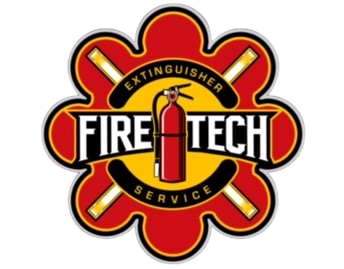Fire Extinguishers for Orlando, FL

Thank you for choosing Fire Tech Extinguisher Service. We sell and service all sizes and types of Fire Extinguishers, from a 2 ½ lb. hand-held to a 300 lb. wheel unit Ocoee, Florida, and surrounding areas. We are a full-service extinguisher company with the ability to service any size or type of extinguishers on the market today. Every service vehicle has the necessary equipment to recharge your extinguishers on the spot without having to leave you a loaner extinguisher and come back later to finish the job. At Fire Tech Extinguisher Service, we provide the highest level of service at the lowest price guaranteed. Call us now for service!
Type Of Extinguishers We Service
FIRE EXTINGUISHER SIZES
Portable extinguishers are also rated for the size of fire they can handle. This rating is expressed as a number from 1 to 40 for Class A fires and from 1 to 640 for Class B fires. This rating will appear on the label-- 2A:10B:C, for example. The larger the numbers, the larger the fire of a specific class on which the extinguisher can be used (but higher-rated models are often heavier - make sure you can hold and operate an extinguisher before you buy it). No number accompanies an extinguisher's Class C rating. The C on the label indicates only that the extinguisher is safe to use on electrical fires. Extinguishers for Class D fires must match the type of metal that is burning. These extinguishers do not use numerical ratings. Extinguishers for Class D fires are labeled with a list detailing the metals that match the unit's extinguishing agent.
DIFFERENT TYPES OF FIRE EXTINGUISHERS
The Fire Extinguisher must be appropriate for the type of fire being fought. Multipurpose fire extinguishers, labeled ABC, may be used in all three classes of fire. If you use the wrong type of extinguisher, you can endanger yourself and make the fire worse. Using water or an extinguisher labeled only for Class A fires on a grease fire or a "live" electrical equipment fire is also very dangerous. Depending on their intended use, portable extinguishers store specific "extinguishing agents," which are expelled onto the fire. The types of Fire Extinguishers include:
- PRESSURIZED WATER MODELS are appropriate for use on Class A fires only. These must never be used on electrical, flammable, or combustible liquid fires.
- CARBON DIOXIDE extinguishers contain pressurized liquid carbon dioxide, which becomes a gas when expelled. These models are rated for use on Class B and C fires but can be used on Class A. Carbon dioxide does not leave a residue.
- DRY CHEMICAL extinguishers are either stored-pressure models or cartridge-operated models. The stored-pressure models have a lever above the handle for operation. The cartridge-operated models require two steps: Depress the cartridge lever and squeeze the nozzle at the end of the hose. The dry chemicals leave a residue that must be cleaned up after use.
- AMMONIUM PHOSPHATE dry chemical can be used on Class A, B, and C fires but should never be used on a fire in a commercial grease fryer because of the possibility of reflash and because it will render the fryer's automatic fire-protection system less effective.
- SODIUM BICARBONATE dry chemical, suitable for fighting Class B and C fires, is preferred over other dry-chemical extinguishers for fighting grease fires. Where provided, always use the extinguishing system first. This also shuts off the heat to the appliance.
- POTASSIUM BICARBONATE, UREA-BASE POTASSIUM BICARBONATE, and POTASSIUM CHLORIDE dry chemical are more effective and use fewer agents than sodium bicarbonate on the same fire.
- FOAM (or AFFF and FFFP) EXTINGUISHERS coat the surface of a burning flammable liquid with a chemical foam. When using a foam extinguisher, blanket the entire surface of the liquid to exclude the air.
FIRE EXTINGUISHERS HAVE THEIR LIMITS
Portable extinguishers are not designed to fight large or spreading fires. Even against small fires, they are useful only under certain conditions:
- The operator must know how to use the extinguisher.
- The extinguisher must be within easy reach, in working order, and fully charged.
- The operator must have a clear escape route that will not be blocked by fire.
- The extinguisher must match the type of fire being fought. (Extinguishers containing water are unsuitable for use on grease or electrical fires.)
- The extinguisher must be large enough to put out the fire. Many portable extinguishers discharge completely in as few as eight to ten seconds.
Always be sure the fire department inspects the fire site, even if you think you've extinguished the fire!







